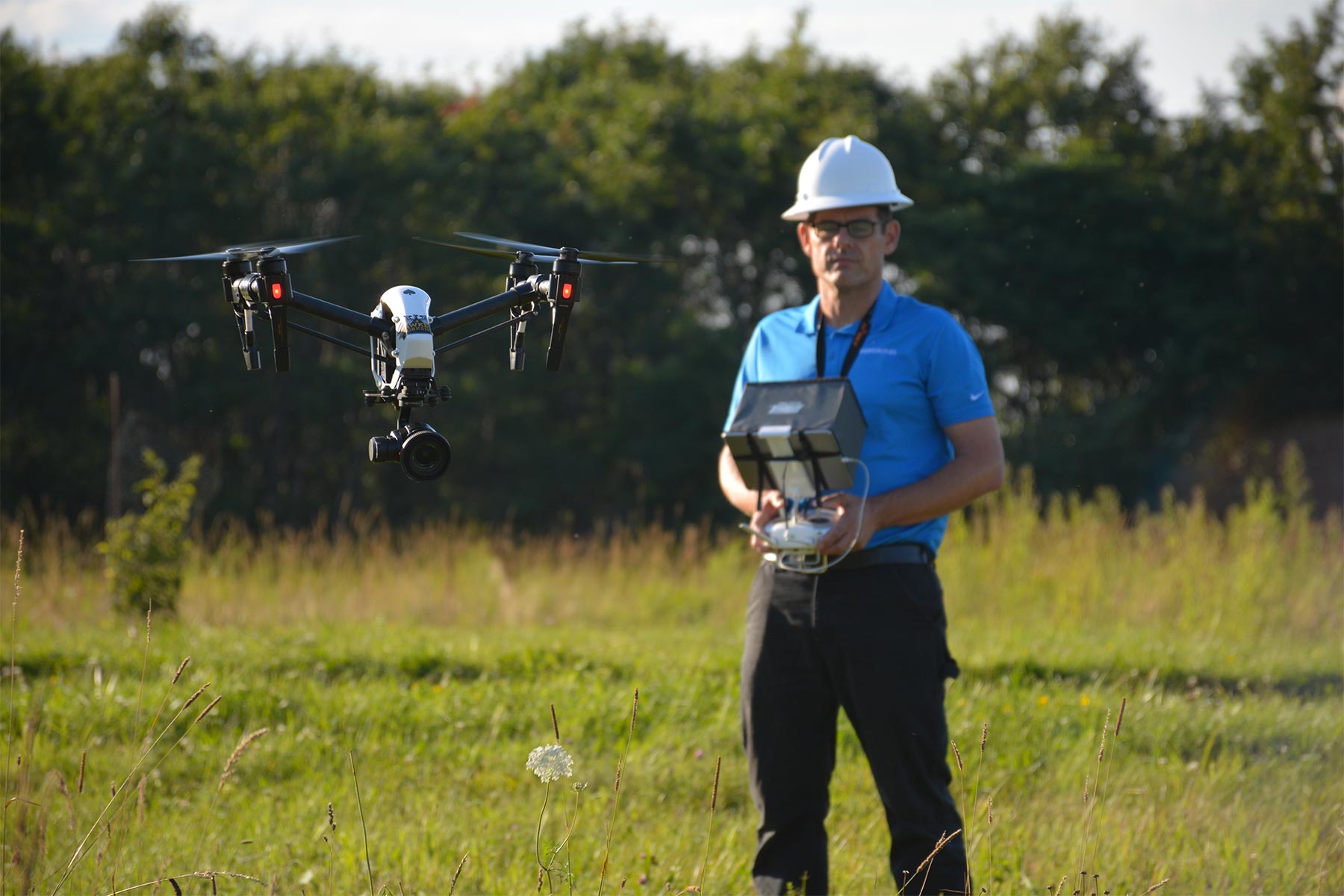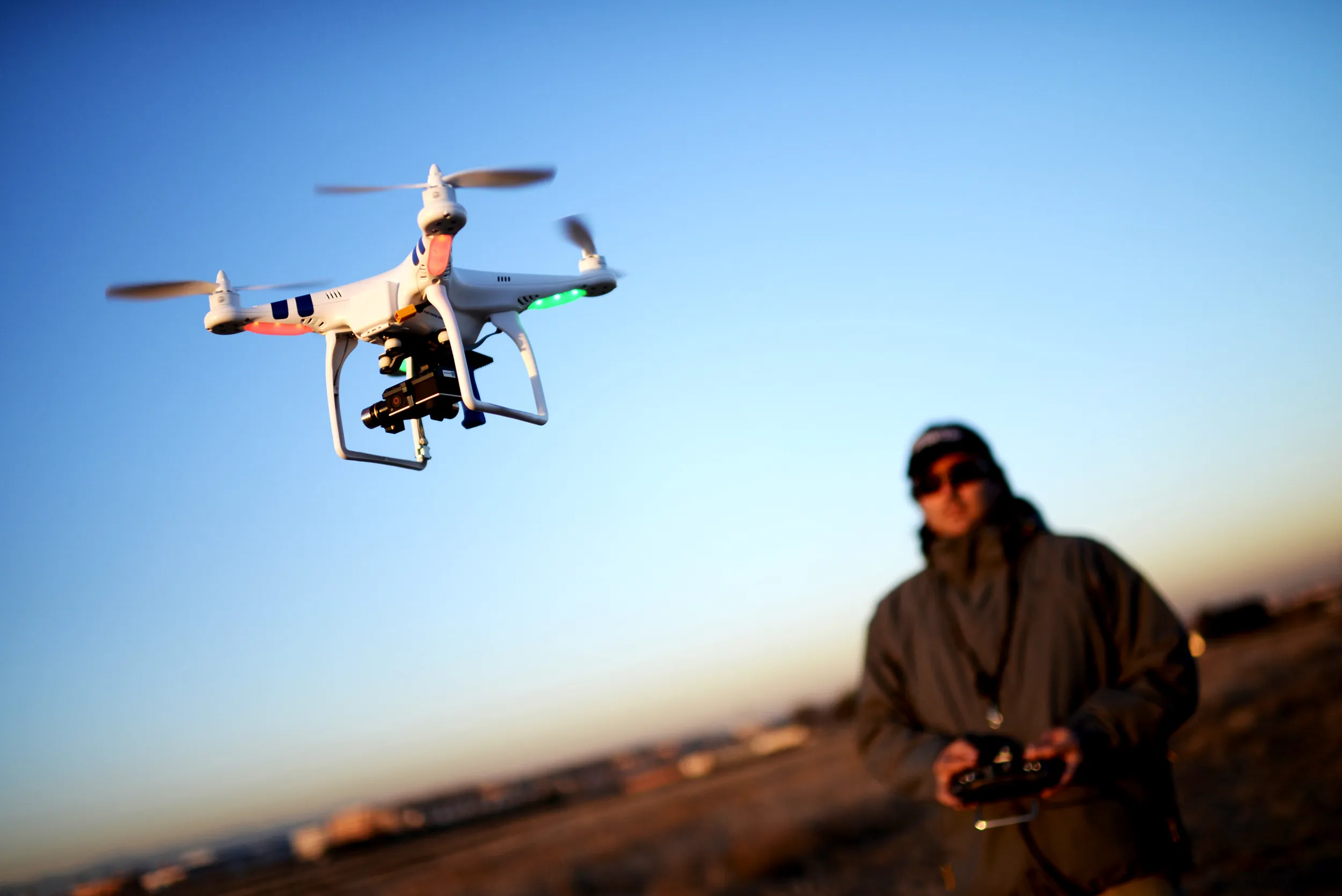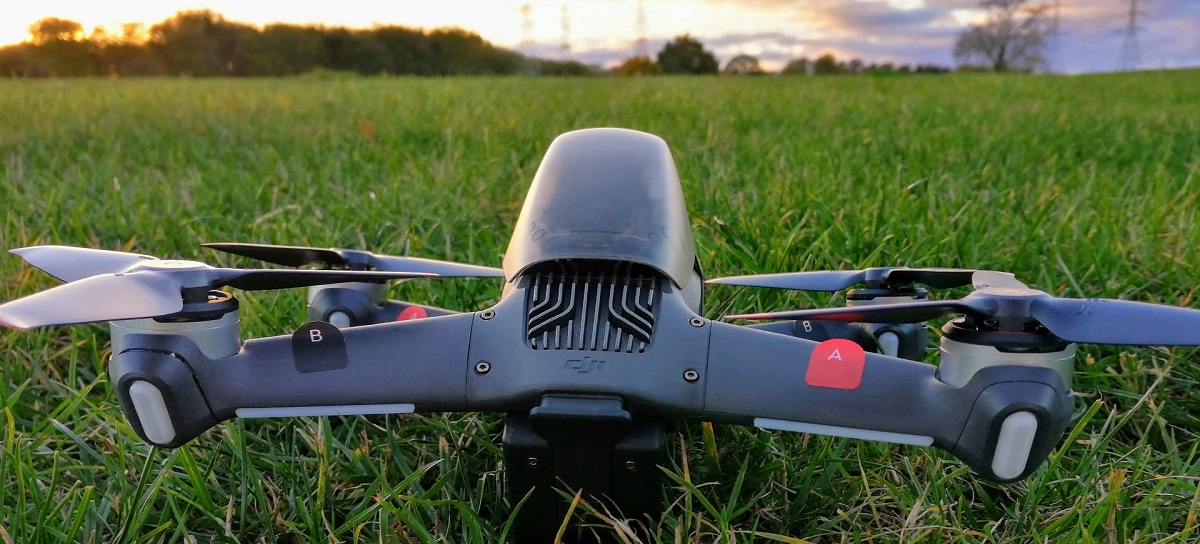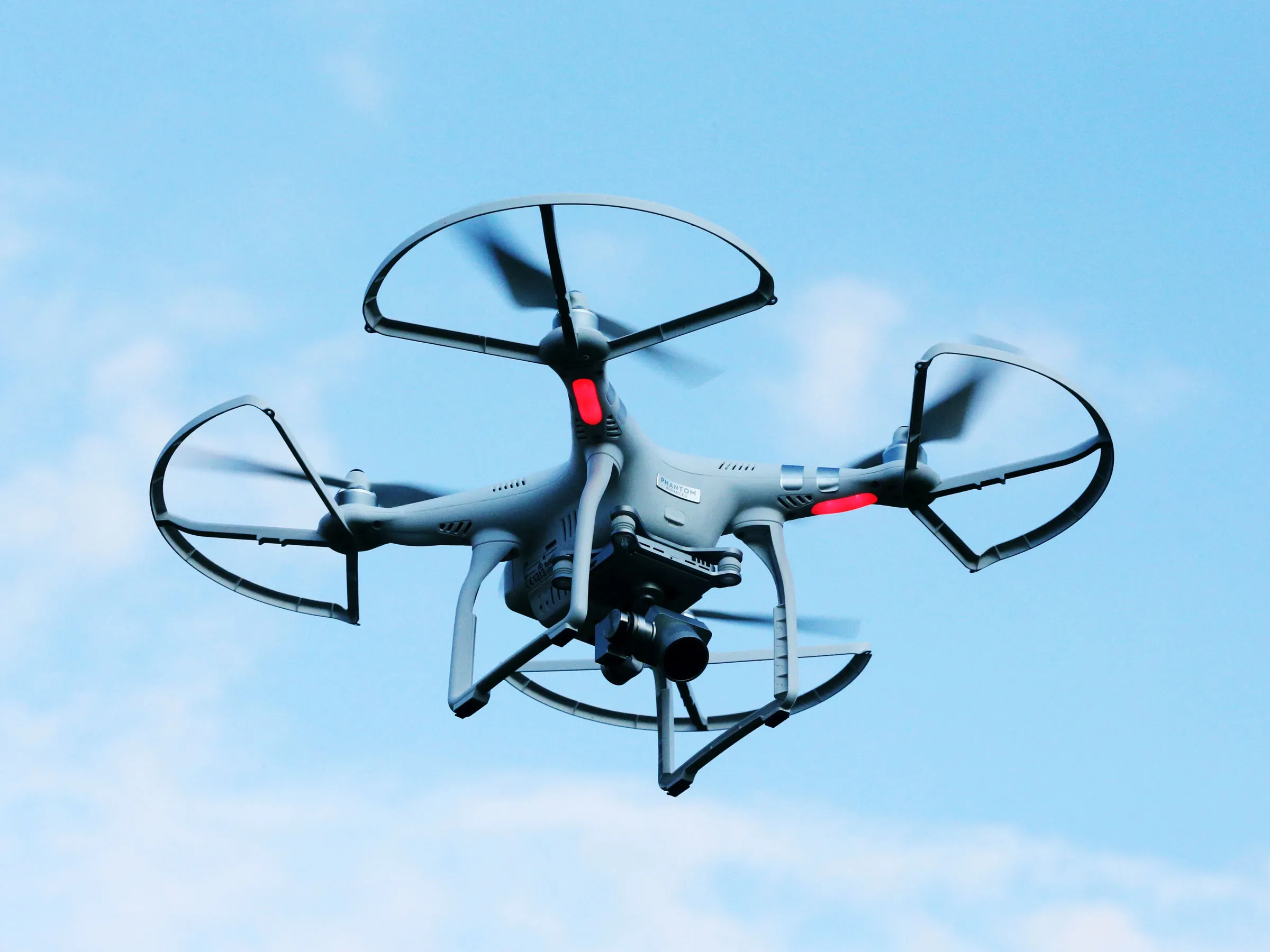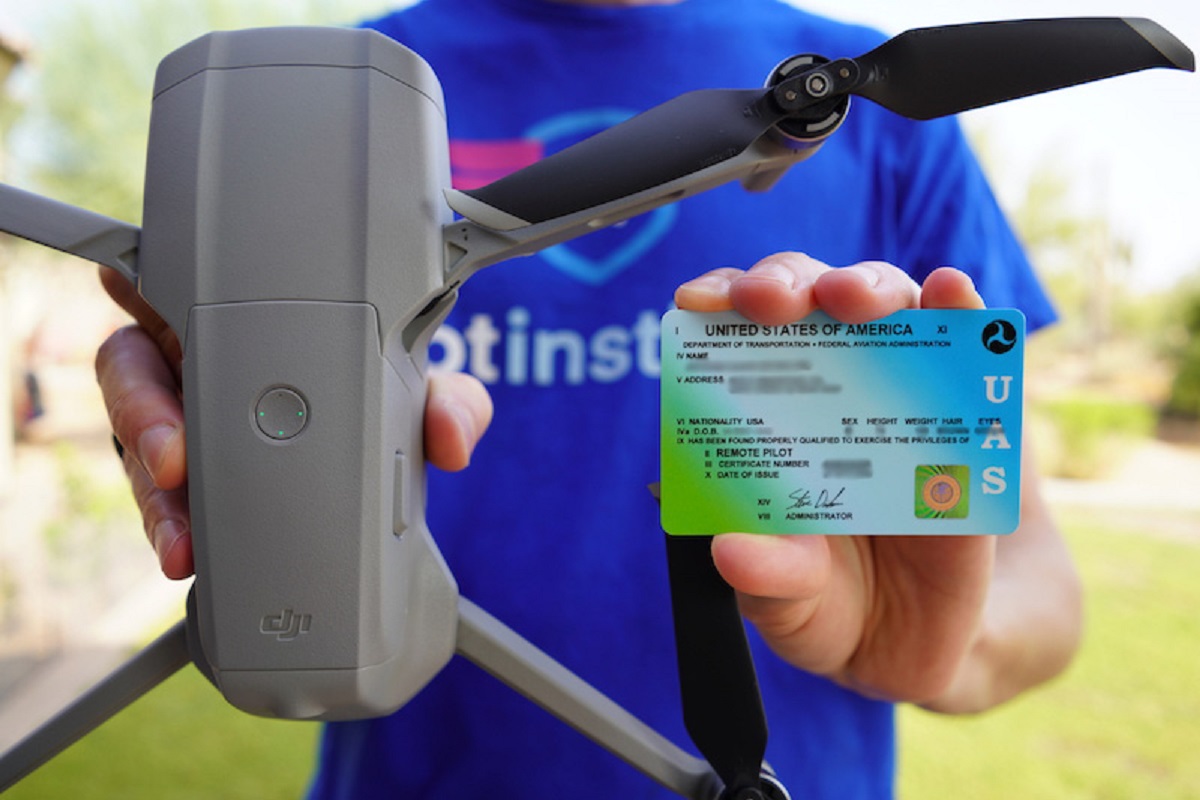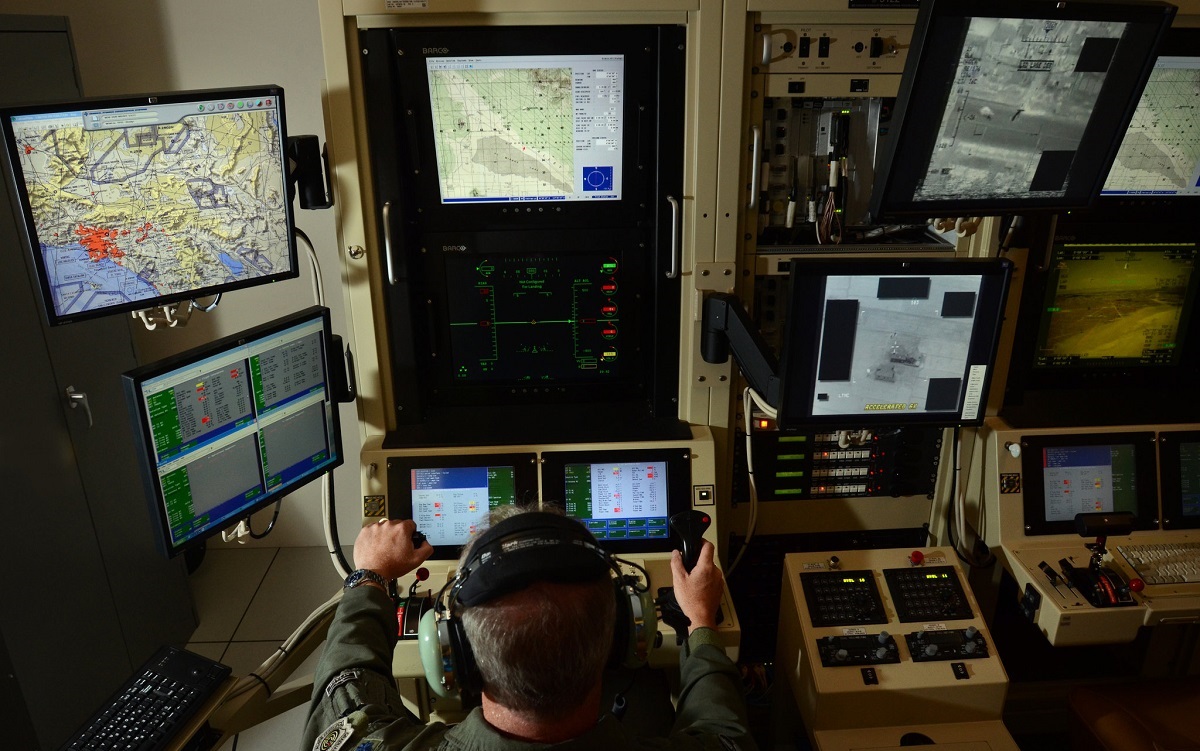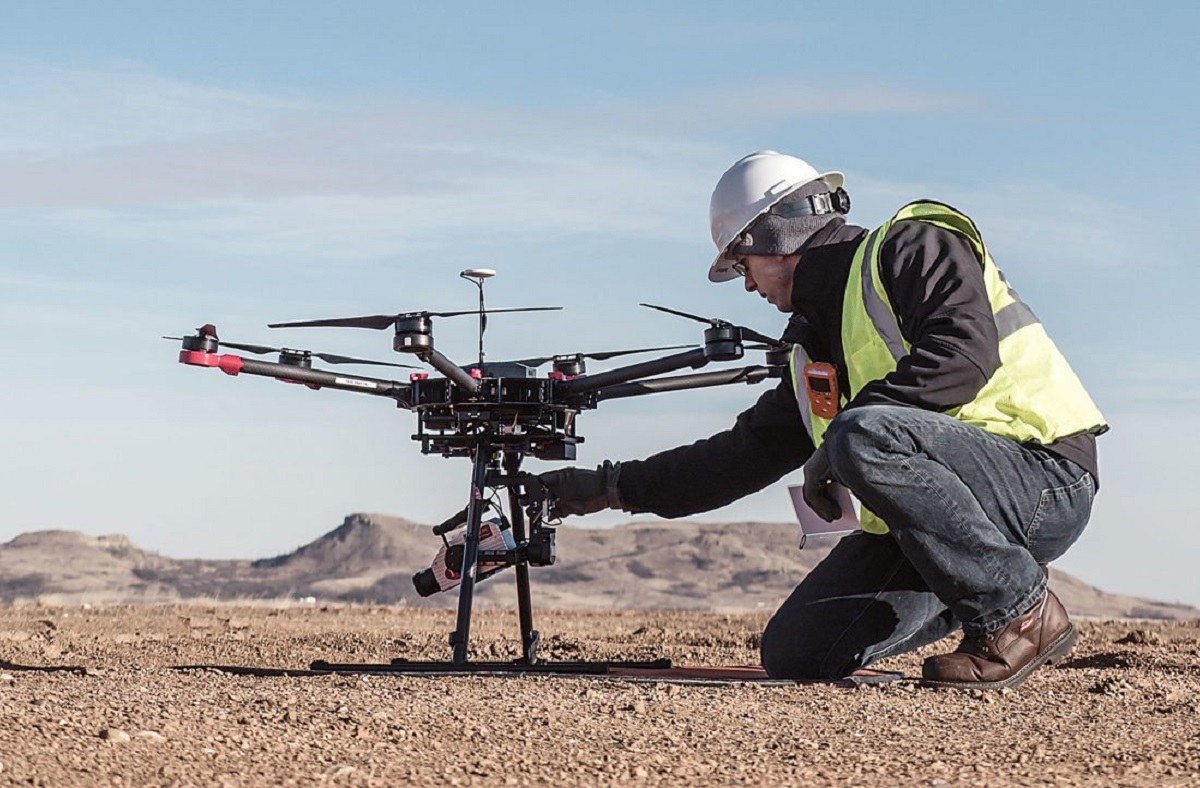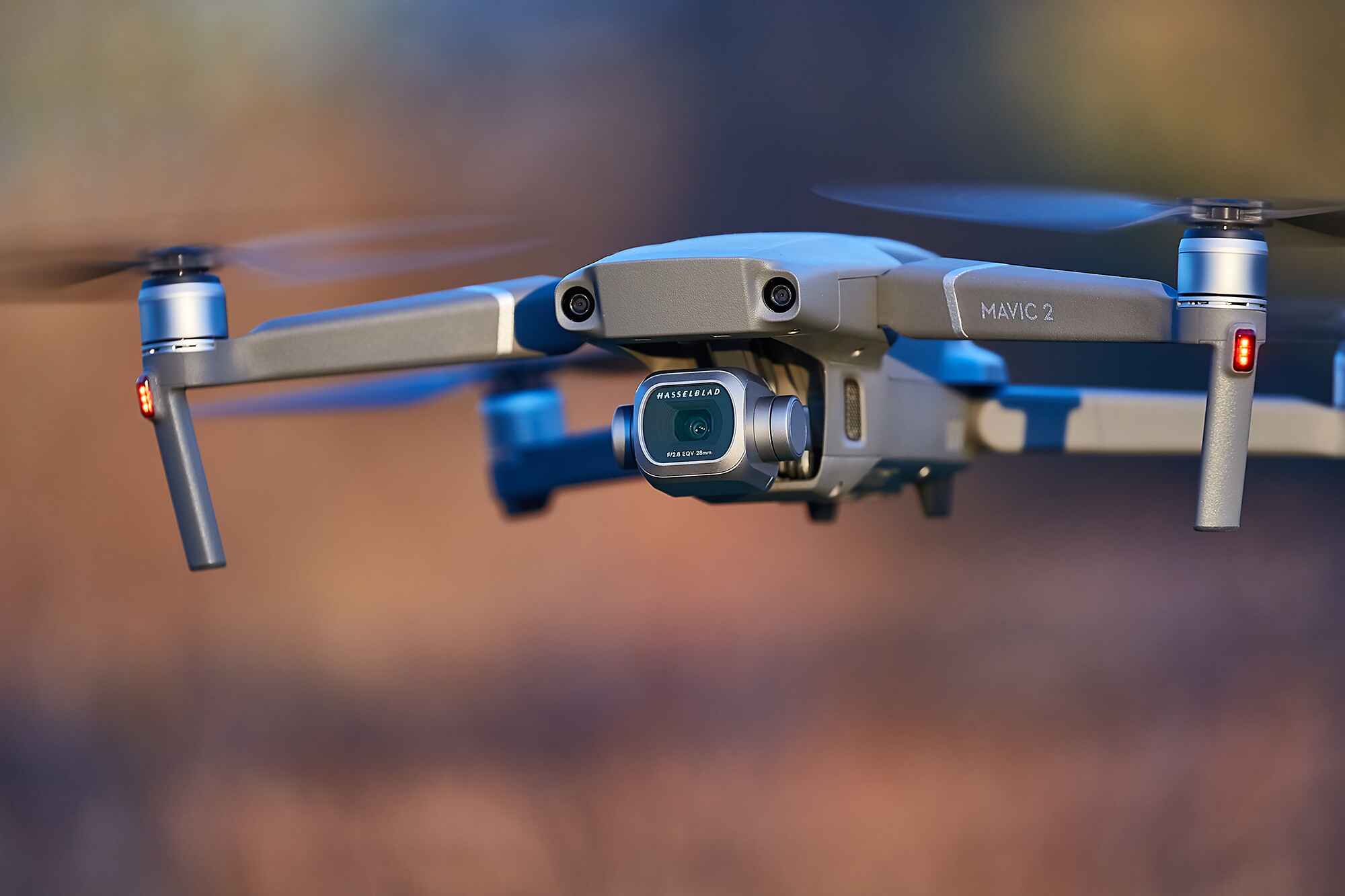Introduction
Welcome to the fascinating world of drone aviation! Drones, also known as unmanned aerial vehicles (UAVs), have revolutionized various industries, from photography and agriculture to search and rescue operations. As the demand for drones continues to grow, so does the need for skilled and qualified drone pilots.
A drone pilot is an individual who possesses the knowledge and expertise to operate and control drones for a wide range of purposes. These highly skilled professionals play a crucial role in ensuring the safe and efficient operation of drones and capturing breathtaking aerial footage.
Drone piloting is not just a hobby; it has become a legitimate profession with numerous career opportunities. Aspiring drone pilots must have a thorough understanding of drone technology, flight regulations, and possess excellent hand-eye coordination to navigate drones in various environments.
In this article, we will explore the world of drone pilots, including their responsibilities, the skills required, career opportunities, as well as the challenges and risks they may encounter in the field. Whether you are interested in pursuing a career as a drone pilot or simply curious about the profession, read on to discover what it takes to soar the skies as a drone pilot.
What is a Drone Pilot?
A drone pilot is an individual who is trained and authorized to operate unmanned aerial vehicles (UAVs), commonly known as drones. These skilled professionals control the flight and maneuvers of drones using remote controls or computer systems. They are responsible for ensuring the safe and successful operation of drones and capturing high-quality aerial footage.
Drone pilots can be employed in various industries, including cinematography, real estate, agriculture, construction, and public safety. They play a crucial role in capturing stunning aerial images and videos, conducting inspections, monitoring crops, mapping terrains, and even assisting in search and rescue missions.
To become a certified drone pilot, one must undergo rigorous training and pass the necessary examinations mandated by aviation authorities. This includes understanding the principles of flight, mastering the operation of drones, and adhering to flight safety regulations.
As technology continues to advance, the role of a drone pilot has become more diverse. Some drone pilots specialize in specific types of drones, such as fixed-wing drones or quadcopters, depending on the requirements of their industry. Others may focus on aerial photography or video production, utilizing drones to capture breathtaking footage for various purposes.
One of the key responsibilities of a drone pilot is to navigate drones in a controlled and safe manner. This requires exceptional hand-eye coordination, a thorough understanding of flight dynamics, and the ability to react quickly to changing conditions in the environment. Drone pilots must also have a keen eye for detail, as they need to identify and mitigate any potential safety hazards during flights.
In addition to flight operations, drone pilots are also responsible for maintaining and troubleshooting drones. They need to have a solid understanding of the technical aspects of the drones they operate, including battery management, firmware updates, and equipment maintenance.
Overall, a drone pilot is a highly skilled individual who combines technical proficiency, creativity, and a commitment to safety. With the ever-increasing demand for drone services, the role of a drone pilot continues to gain prominence in various industries, making it an exciting and rewarding career path for those passionate about aviation and technology.
Skills and Training Required
Being a successful drone pilot requires a combination of technical skills, knowledge, and training. Whether you are considering a career as a drone pilot or simply want to improve your drone flying abilities as a hobbyist, here are the essential skills and training required:
1. Knowledge of Drone Technology: A drone pilot must have a deep understanding of drone technology, including the different types of drones, their components, and how they function. This knowledge is essential for troubleshooting technical issues and ensuring the optimal performance of the drone.
2. Flight Control and Navigation: Drone pilots must possess excellent hand-eye coordination and spatial awareness to control and maneuver drones in various environments. They should be skilled in piloting techniques such as takeoff, landing, hovering, and executing smooth and precise movements.
3. Understanding of Aviation Regulations: Drone pilots need to be familiar with the regulations and guidelines set forth by aviation authorities, such as the Federal Aviation Administration (FAA) in the United States. This includes knowledge of airspace restrictions, flight altitude limits, and operating within the legal framework of drone operations.
4. Visual and Situational Awareness: Drone pilots must have sharp visual perception and situational awareness to detect obstacles, assess risks, and navigate safely during flights. This skill is crucial for avoiding collisions and ensuring the safety of people and property on the ground.
5. Photography and Videography Skills: For drone pilots involved in aerial photography and videography, a solid understanding of composition, lighting, and camera settings is essential. This skill allows them to capture stunning images and footage from unique perspectives.
6. Problem-solving and Adaptability: Drone pilots often encounter unexpected challenges during flights, such as sudden changes in weather conditions or technical malfunctions. The ability to think quickly, make informed decisions, and adapt to changing circumstances is vital in maintaining control and ensuring a safe flight.
7. Communication and Collaboration: In some cases, drone pilots may work as part of a team, collaborating with photographers, videographers, or other professionals. Effective communication and teamwork skills are essential for coordinating flight plans, ensuring synchronization with ground operations, and achieving the desired results.
When it comes to training, aspiring drone pilots have several options. Many countries have specific regulations that require pilots to obtain certification or licenses to operate drones commercially. This usually involves passing an exam that tests knowledge of relevant regulations and best practices. Additionally, there are numerous drone schools, training programs, and online courses available that provide comprehensive training in drone piloting skills, regulations, and safety practices.
By honing these skills and obtaining the necessary training, aspiring drone pilots can excel in their profession and contribute to the growing field of drone technology.
Responsibilities of a Drone Pilot
As a drone pilot, you will have a range of responsibilities to ensure safe and successful drone operations. These responsibilities may vary depending on the industry you work in, but here are some common ones:
1. Pre-flight Planning: Before every flight, a drone pilot must thoroughly plan and assess the mission. This includes checking weather conditions, airspace restrictions, and any potential hazards in the flight area. They also need to ensure that the drone is properly calibrated and all equipment is in good working condition.
2. Conducting Safety Checks: It is the responsibility of a drone pilot to conduct pre-flight checks on the drone, including inspecting the propellers, battery, and other critical components. They must ensure that everything is in proper working order and that the drone is ready for flight.
3. Adhering to Aviation Regulations: Drone pilots must comply with relevant aviation regulations set by the governing authorities. This may include abiding by flight altitude restrictions, maintaining a line of sight with the drone, and ensuring that all necessary permits or licenses are obtained, especially for commercial drone operations.
4. Operating Drones Safely: Safety is of utmost importance in drone operations. Pilots must take precautions to avoid collisions, fly in appropriate weather conditions, and maintain a safe distance from people, buildings, and other aircraft. They should also be prepared to handle emergency situations and follow emergency procedures if necessary.
5. Capturing High-Quality Footage: If the purpose of the flight is to capture aerial footage or images, drone pilots need to ensure that they are able to capture high-quality and visually appealing content. This involves understanding camera settings, framing shots creatively, and utilizing the drone’s capabilities to capture unique perspectives.
6. Data Collection and Analysis: In certain industries, drone pilots are responsible for collecting data during flights, such as mapping terrains, monitoring crop health, or conducting inspections. They must ensure accurate data collection and possess the ability to analyze the gathered information effectively.
7. Maintenance and Equipment Management: Drone pilots are also responsible for the maintenance and upkeep of their drones and equipment. This includes regular battery charging, firmware updates, and general troubleshooting. They should also keep track of equipment inventory to ensure everything is in working order for each flight.
8. Communication and Collaboration: Depending on the project or mission, drone pilots may need to collaborate and communicate effectively with other team members, such as ground personnel, clients, or other pilots. Clear communication ensures seamless coordination during flights and promotes the achievement of project goals.
By fulfilling these responsibilities, drone pilots contribute to the safe and efficient operation of drones, whether it be for commercial purposes, research, or other applications. It is essential for pilots to approach their role with professionalism, attention to detail, and a strong commitment to safety and compliance.
Types of Drone Pilots
The field of drone piloting offers various specializations and opportunities for drone pilots to utilize their skills in different industries. Here are some common types of drone pilots:
1. Commercial Drone Pilots: Commercial drone pilots work in industries such as filmmaking, real estate, construction, and agriculture. They are hired to capture aerial footage, conduct inspections, monitor crops, and assist in surveying or mapping projects. These pilots often need to obtain specific certifications or licenses to comply with regulations and operate drones for commercial purposes.
2. Military Drone Pilots: Military drone pilots operate drones for military applications, such as reconnaissance, surveillance, and combat operations. They are responsible for operating advanced drone systems and collecting crucial intelligence data. Military drone pilots undergo rigorous training to handle complex missions and work closely with ground personnel to ensure successful operations.
3. Public Safety Drone Pilots: Public safety or emergency response drone pilots assist in situations such as search and rescue operations, firefighting, and disaster assessment. They use drones to gather real-time data, monitor hazardous situations, and aid in emergency response efforts. These pilots often work in collaboration with law enforcement agencies, fire departments, and other emergency services.
4. Agricultural Drone Pilots: Agricultural drone pilots specialize in using drones for agricultural purposes, including crop monitoring, pest management, and irrigation analysis. They help farmers identify potential issues affecting crop health, optimize water usage, and improve overall agricultural productivity. These pilots may also collect data for precision farming techniques, such as creating yield maps or monitoring soil conditions.
5. Research and Scientific Drone Pilots: Research and scientific drone pilots work in various scientific fields, including environmental research, wildlife conservation, and geological surveys. They use drones to collect data, conduct aerial surveys, and aid in scientific studies. These pilots often collaborate with researchers to design flight missions that meet specific research objectives.
6. Recreational Drone Pilots: Recreational drone pilots fly drones as a hobby or for personal enjoyment. They may capture aerial photographs or videos for their own pleasure, explore new flying techniques, or participate in local drone racing events. Although recreational pilots do not require specific certifications, it is important for them to follow local regulations and fly safely to prevent accidents.
Each type of drone pilot has unique requirements and skill sets. However, all drone pilots share a passion for flight, a meticulous approach to safety, and a desire to utilize drones for various purposes.
Career Opportunities for Drone Pilots
The field of drone piloting offers a wide range of exciting career opportunities across various industries. As the use of drones continues to grow, so does the demand for skilled and qualified drone pilots. Here are some career paths available for drone pilots:
1. Aerial Photography and Videography: One of the most popular career paths for drone pilots is aerial photography and videography. Drone pilots are in high demand for capturing stunning aerial shots for films, commercials, real estate listings, weddings, and other special events. They work closely with photographers and videographers to achieve unique and captivating aerial footage.
2. Inspections and Surveying: Drone pilots are increasingly being hired to conduct inspections and surveys in industries such as infrastructure, construction, and energy. They can inspect buildings, bridges, towers, and other structures for maintenance, damages, or safety assessments. Surveying professionals also utilize drones to capture accurate and detailed topographic data in a fraction of the time it takes with traditional methods.
3. Agriculture and Crop Monitoring: With the advancement of precision agriculture, drone pilots are playing a vital role in crop monitoring and management. They assist farmers in assessing crop health, analyzing nutrient deficiencies, monitoring irrigation systems, and identifying areas of concern. Drone pilots in agriculture help optimize farming practices, increase yield, and reduce costs.
4. Public Safety and Emergency Response: Drone pilots are increasingly being employed by public safety agencies to assist in emergency response situations. They can quickly deploy drones to survey disaster areas, search for missing persons, and assess critical situations in real-time. Public safety drone pilots play a vital role in providing valuable and timely information to aid in emergency responses.
5. Environmental and Conservation: Drones are increasingly being used in environmental research, wildlife conservation, and environmental monitoring. Drone pilots assist in collecting data on wildlife populations, monitoring ecosystems, mapping vegetation, and supporting research efforts in remote or inaccessible areas. They contribute to ecologically sustainable practices and conservation efforts.
6. Education and Training: As the drone industry continues to evolve, the need for qualified drone instructors and trainers is on the rise. Experienced drone pilots can find opportunities to teach others how to fly drones safely, understand drone regulations, and develop specialized skills. They may work in educational institutions, training centers, or provide individual coaching services.
7. Entrepreneurship and Freelancing: Many drone pilots choose to start their own drone services business or work as freelancers, offering their expertise in various industries. They can provide drone services such as aerial photography, inspections, or mapping to clients on a project basis. This offers flexibility and the opportunity for pilots to explore different industries and build a diverse portfolio.
These are just a few examples of the career opportunities that exist for drone pilots. The versatility of drones opens up endless possibilities in various fields, making it an exciting and dynamic profession for those passionate about aviation and technology.
Challenges and Risks of Being a Drone Pilot
While the field of drone piloting offers numerous benefits and exciting opportunities, it also comes with its share of challenges and risks. Here are some of the key challenges and risks that drone pilots may encounter in their profession:
1. Flight Regulations and Compliance: One of the significant challenges for drone pilots is staying updated with the ever-changing flight regulations and compliance requirements. Aviation authorities impose strict rules governing drone operations, including airspace restrictions, flight altitude limits, and permissions for flying in certain areas. Violating these regulations can lead to legal consequences and compromise safety.
2. Adverse Weather Conditions: Flying drones in adverse weather conditions, such as strong winds, rain, or fog, can pose a significant risk. It may affect the stability and control of the drone, potentially leading to accidents or crashes. Drone pilots need to assess weather conditions and exercise caution to ensure safe flights.
3. Equipment Failure and Technical Issues: Like any technology, drones can experience equipment failure or technical issues during flights. Malfunctions in the propulsion system, battery failure, or loss of signal can lead to accidents or loss of control. Drone pilots must regularly inspect and maintain their equipment to minimize the risk of technical glitches.
4. Collisions and Avoiding Hazards: Avoiding collisions with objects, buildings, or other aircraft is a crucial challenge for drone pilots. Accidents can happen if the pilot fails to spot obstacles during flight or misjudges distances. Careful planning, situational awareness, and staying within line of sight are essential to mitigate this risk.
5. Privacy Concerns and Ethical Considerations: As a drone pilot, respecting privacy rights and adhering to ethical standards is paramount. There can be concerns about invading privacy while capturing aerial footage, especially in residential areas. Drone pilots must exercise caution and obtain necessary permissions or consent when operating drones in sensitive locations.
6. Human Error and Pilot Skill: Human error, such as misjudging distances, incorrect flight maneuvers, or poor decision-making, can lead to accidents or damage to the drone. Pilots must continually refine their skills, stay updated with safety procedures, and practice responsible flying behaviors to minimize the risk of human error.
7. Restricted or No-Fly Zones: Certain areas, such as military bases, airports, or government facilities, are considered restricted or no-fly zones for drones. Drone pilots must be familiar with these locations and strictly adhere to airspace restrictions to prevent unauthorized access or potential security risks.
Despite these challenges and risks, drone pilots can mitigate them by adopting best practices, undergoing regular training, and staying informed about the evolving industry regulations. By prioritizing safety, ethics, and continuing education, drone pilots can navigate these challenges and enjoy a rewarding and successful career.
Legal Requirements and Regulations for Drone Pilots
Operating a drone comes with legal responsibilities and regulations that drone pilots must adhere to. These regulations are put in place to ensure the safety of airspace, privacy rights, and the proper use of drones. Here are some of the key legal requirements and regulations for drone pilots:
1. Registration: In many countries, drones above a certain weight threshold must be registered with the aviation authority. This registration process requires providing personal and drone information and obtaining a unique identification number for the drone.
2. Pilot Certification and Training: Some regions require drone pilots to obtain a pilot certification or license before operating drones for commercial purposes. This certification often involves passing a knowledge test on aviation regulations, flight procedures, and safety practices. Regular training and continuing education are crucial to staying updated with the latest regulations.
3. Restricted Airspace: Drone pilots must be aware of restricted airspace and adhere to flight restrictions imposed by aviation authorities. This includes avoiding areas near airports, military installations, and other sensitive locations. Flight planning tools and mobile apps can aid in identifying restricted airspace and no-fly zones.
4. Flight Altitude and Distance Limits: Many countries have specific regulations regarding the maximum altitude and distance that drones can be flown. These limits are in place to ensure the safety of other aircraft and prevent interference with private properties. Pilots must stay within these limits and fly in a responsible manner.
5. Visual Line of Sight: In most jurisdictions, drone pilots are required to maintain a visual line of sight with their drones during flights. This means the pilot must be able to see the drone at all times without the use of visual aids like binoculars or FPV (First Person View) goggles. Exceptions may be made for commercial operations using observers or advanced flight systems.
6. Privacy and Data Protection: Drone pilots must respect privacy rights and not infringe on the privacy of individuals while operating drones. This includes avoiding capturing footage or images of private properties without consent and being mindful of any local regulations regarding privacy and data protection.
7. Commercial Operations and Permits: When using drones for commercial purposes, such as aerial photography or inspections, pilots may need to obtain special permits or licenses. Commercial drone operators are often required to comply with additional regulations, such as insurance requirements, specific flight operation procedures, and obtaining necessary approvals for their projects.
It’s important for drone pilots to research and familiarize themselves with the specific regulations and requirements of their region or country. Keeping up to date with changes in regulations, staying informed about local airspace restrictions, and adhering to ethical practices are essential for responsible and legal drone operations.
Tips for Aspiring Drone Pilots
If you’re an aspiring drone pilot looking to enter the exciting world of drone aviation, here are some valuable tips to help you get started and succeed in your journey:
1. Research and Learn: Begin by educating yourself about drones, their technology, and the regulations in your region. Familiarize yourself with the different types of drones, their capabilities, and any specific requirements for operating drones in your area.
2. Obtain Proper Training: Consider enrolling in a reputable drone training program or course. This will provide you with essential knowledge and practical skills needed to operate drones safely and effectively. Training programs may cover flight principles, maneuvering techniques, emergency procedures, and regulatory compliance.
3. Practice Regularly: Like any skill, flying a drone requires practice. Dedicate time to regular flying practice, both in open spaces and more confined areas. This will help you develop your piloting skills, become comfortable with the controls, and enhance your ability to maneuver the drone accurately.
4. Join a Drone Community: Engage with other drone enthusiasts and professionals by joining local or online drone communities. Networking with experienced pilots can provide invaluable knowledge, mentorship, and opportunities for collaboration or learning about job opportunities in the industry.
5. Stay Updated with Regulations: Drone regulations are evolving, so it’s essential to stay up to date with the latest rules and requirements in your region. Regularly check for any updates or changes to flight restrictions, registration processes, and operational guidelines to ensure you remain compliant and fly safely.
6. Respect Privacy and Safety: Always prioritize the safety and privacy of others when flying your drone. Maintain a safe distance from people, property, and other aircraft. Respect individuals’ privacy and obtain proper consent or permissions before capturing footage in private or sensitive areas.
7. Invest in Quality Equipment: Choosing the right drone and equipment is crucial for a successful experience as a drone pilot. Invest in a reliable and capable drone that suits your needs and the type of operations you plan to undertake. Also, ensure you have the necessary accessories, such as spare batteries, memory cards, and propellers, to maximize your flying time and minimize any potential downtime.
8. Experiment with Different Shots and Techniques: As you become more skilled and comfortable with flying, don’t be afraid to experiment with different flight paths, camera angles, and maneuvers. This will allow you to capture unique and compelling footage that sets you apart as a drone pilot.
9. Develop a Portfolio: Build a portfolio showcasing your best aerial photographs or videos. This will help potential clients or employers assess your skills and expertise. Regularly update your portfolio with your latest work to demonstrate your growth and versatility as a pilot.
10. Emphasize Safety: Always prioritize safety in every aspect of your drone operations. Conduct pre-flight checks, monitor weather conditions, and follow safe flying practices. By prioritizing safety, you will not only protect yourself and others but also establish a professional reputation as a responsible drone pilot.
By following these tips, you’ll be well on your way to becoming a skilled and successful drone pilot. Remember to always fly responsibly, stay informed, and continuously improve your skills to make the most out of your drone aviation journey.
Conclusion
Being a drone pilot offers a unique and exciting career path with diverse opportunities across various industries. From capturing breathtaking aerial footage to assisting in important operations like inspections and surveys, drone pilots play a vital role in today’s technologically advanced world.
To embark on a successful journey as a drone pilot, it is crucial to develop a strong foundation of technical knowledge, flight skills, and a deep understanding of aviation regulations. Continuous learning and staying up to date with the latest advancements in drone technology and regulations are key to ensuring safe and legal operations.
Drone pilots must also emphasize the importance of safety, both for themselves and others. This includes adhering to flight regulations, conducting thorough pre-flight checks, and practicing responsible flying behaviors. Prioritizing safety establishes a professional reputation and helps to prevent accidents and incidents.
Beyond the technical aspects, being a successful drone pilot requires creativity, adaptability, and the ability to capture captivating footage and images. It is essential to experiment with different shots, angles, and techniques to showcase your unique style and create compelling visual content.
As the drone industry continues to evolve, so do the career opportunities for drone pilots. From aerial photography and videography to inspections, surveying, and public safety operations, the possibilities are vast. By specializing in a particular field or industry and continuously refining your skills, you can position yourself for success and carve out a fulfilling career as a drone pilot.
Remember, being a drone pilot is not just about flying drones; it’s about using this powerful technology to make a positive impact in various industries. Embrace the challenges, stay curious, network with other professionals, and always strive for excellence. With dedication, professionalism, and a commitment to safety, you can soar the skies as a skilled and sought-after drone pilot. Happy flying!







